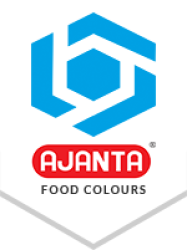South Korea, officially known as the Republic of Korea (ROK), is a beautiful and highly developed country located in East Asia on the southern half of the Korean Peninsula. The country is known globally for its technological innovation, high-speed internet infrastructure, K-pop culture, manufacturing industries, and strong global brands like Samsung, LG, Hyundai, and Kia. South Korea is a small country but it has one of the largest economies in the world, ranked within the 10th - 15th position. In the year 2024, its nominal GDP is around $2 trillion, which makes it the 10th largest economy in the world.
South Korea shares its land border with only North Korea to the north that are separated by the heavily fortified Demilitarized Zone (DMZ) because the relationship between North Korea and South Korea is not so good. The country also shares its Maritime borders with 3 countries. In the east, it shades sea border with Japan, the Yellow Sea to the west, and the Korea Strait to the south, which separates it from Japan. South Korea’s manufacturing industries from food, cosmetics, pharmaceuticals, to pet food play a crucial role in its GDP.
Colour is a crucial component of various manufacturing industries in South Korea. Colour manufacturers of South Korea prepare colours but they are not enough to fulfill all the colour related demand of the country. To overcome this problem big manufacturers, merchants, distributors, traders, import colours from other countries like India, China, America, etc., and sell them in the country at high-prices, making a profit on each sales. Some sell the colourants under the same brand name from which they bought colour while other create their own labells and sell under their branding.
South Korean Industries Where Colours Play a Vital Role
In South Korea, colours play a crucial role in various manufacturing industries. Colours give an appealing look to products that attract the attention of consumers and boost the product sales in the market. Some of the South Korean manufacturing industries are:
Food and Beverage Industry
Colour plays a vital role in South Korea’s food manufacturing industry, enhancing product appeal and consumer attraction. It provides an appealing look to a range of food products, from processed products, bakery items, dairy products, soft drinks, and juices, which increases sales. However, food manufacturers of South Korea often face challenges in selecting the right colours for their products. Manufacturers want high-quality food colours that make their products appealing and stable for a long time. South Korean food manufacturers can overcome their challenges by using synthetic food colours in their products. Synthetic food colours give a final appealing look to food products, helping in creating brand recognition in the market and boosting sales. In South Korea, most of the food and beverage manufacturing industries are located near its big cities like Seoul, Incheon, Gyeonggi Province, Busan, and Daejeon. According to Statista, the revenue of the food market amounts to US$140.10 billion in 2025, and it is expected to grow annually by 5.44% (CAGR 2025-2030).
Cosmetic Industry
In the cosmetics manufacturing industry, colours hold an important place. Cosmetic products, whether we are talking about lipsticks, foundations, blushes, or other cosmetic items, require colours for the final touch. South Korean cosmetic manufacturers want colours that do not fade or change on products over time and make the product appealing. Cosmetic manufacturers can overcome their problems by using synthetic cosmetic colours in their products. These high-quality synthetic pigments and dyes are available in a wide range of shades that allow manufacturers to create unique and different coloured products, helping brand recognition in the market and increasing sales. Most of the cosmetics manufacturing industries of South Korea are located in Suwon, Osan, Hwaseong, Yongin, and Cheonan. According to Statista, the revenue of the beauty and personal care market in South Korea is projected to reach US$15.70 billion in 2025, and it is expected to grow annually by 2.63% (CAGR 2025-2030).
Pharmaceutical Industry
In the pharmaceutical manufacturing industry, colours play a crucial role. Colours give a bright and appealing look to a range of medicines, including tablets, capsules, syrups, injectables, and health supplements. These brightly coloured medicines help patients and pharmacists to easily recognize the medicines that reduce the chance of taking the wrong medicines. However, pharmaceutical manufacturers of South Korea often face challenges in selecting the right colours for their products. Manufacturers want stable and high-quality colours that do not fade or bleed over time. To meet these challenges, synthetic food-grade colours offer the best solution to South Korean pharmaceutical manufacturers. Synthetic food-grade colours are of high quality and do not bleed or change in medicines during manufacturing and storage. In South Korea, most of the pharmaceutical manufacturing industry is located near Seoul, Incheon, Hwaseong, Cheonan, and Pyeongtaek. According to Statista, the revenue of the pharmaceutical market of South Korea is set to reach US$13.91 billion in 2025, and the market is anticipated to display a compound annual growth rate (CAGR) of 5.27% between 2025 and 2029.
Chocolate Industry
In the South Korean chocolate manufacturing industry, colours play a crucial role. Colours give a vibrant and appealing look to chocolate products that attract the attention of consumers, especially children and young adults, who are the prime consumers of chocolate. Still, chocolate manufacturers of South Korea often face some challenges during the selection of colours. Manufacturers want stable and premium quality colours that come in various colour shades. South Korean chocolate manufacturers can overcome all their colour-related problems by using synthetic food colours in their products. Synthetic food colours come in various shades that allow chocolate manufacturers to make different coloured products, helping in brand recognition and sales. Most of the chocolate manufacturing industries of South Korea are located near Seoul, Pyeongtaek, Ansan, Cheonan, and Gimhae cities. According to Statista, the revenue of the Chocolate Confectionery market of South Korea is amount to US$638.10 million in 2025, and it is expected to grow annually by 4.71% (CAGR 2025-2030).
Animal Feed Industry
Colours also play a crucial role in the animal feed manufacturing industry of South Korea. Colours makes pet food items appealing for animals that encourage them to eat properly and stay be healthy. However, manufacturers of pet food in South Korea often face challenges in selecting the right colours for their products. They want bright and stable colours that make the feed appealing and fresh for a long time. South Korean animal feed manufacturers can overcome their problem by using synthetic food colours in their products. These colours maintain the stability and consistency of pet food products for a long time. This allows manufacturers to store their products for a long time. Most of the pet food manufacturing industries of South Korea are located near its big cities, where transportation is easy, like Incheon, Cheonan, Gimpo, Anseong, and Seongnam.
Cultural Preferences of Colours in South Korea
In South Korea, cultural preferences of colours play a significant role in product sales. Whether any South Korean purchase food, cosmetics, pharmaceuticals, or chocolate items. Korean consumers often associate soft, clean, and pastel colours with purity, safety, and modernity which makes them ideal for cosmetics and pharmaceutical products. In skincare and beauty items, neutral tones like white, beige, and pink are favoured for their connection to minimalism and skin health. For food and chocolates, natural and vibrant colours like red, brown, green, and yellow are popular, as they reflect freshness, traditional flavours, and seasonal ingredients. Manufacturers of South Korea knows these cultural preferences very well and manufacture their products accordingly to increase its sales and brand recognition in the market.
Regulatory Guidelines on Colours in South Korea
In South Korea, the use of colours in products, whether synthetic or natural food colours, is overseen by the country's governmental body. The Ministry of Food and Drug Safety (MFDS) is the governmental body of South Korea that checks the quality and safety of colours for human consumption. MFDS also conducts inspections, sampling, testing, and enforcement actions from time to time to ensure the safety of colours in products.
In South Korea, starting a new business is also a challenging task. Startups have to compete with the businesses that are already in the market and make space for their products. Pricing of the product is also a hurdle to launching a new product in the market. Startups can overcome their many challenges by using high-quality synthetic food colours in their products, as these colours come in various colour shades that allow the businesses to make different and unique coloured products, helping in brand recognition of the product in the market and increasing sales. Synthetic food colours are an affordable option compared to other colour alternatives like natural food colours. By using synthetic food colours in their products, startups can improve the sales of their products.
If you are a manufacturer of a startup business in South Korea and are looking for high-quality synthetic food colours that help you to create brand recognition of your product in the market and increase sales, Ajanta Food Colours is the best option for you. Ajanat Food Colours is a leading synthetic food colours manufacturer in India, exporting colours to many countries around the world, including South Korea.
For the quality and safety of our colourants, we at Ajanta Food Colours have received various awards and certificates from India and from other countries where Ajanta exports its high-quality colourants. Some of the prestigious awards and certificates received by Ajanta Food colours includes the Arch of Europe Award, the Bureau of Indian Standards (BIS) Award, certifications from the Food Safety and Standards Authority of India (FSSAI), the US Food and Drug Administration (US FDA), as well as Halal, Alcumus ISOQAR, Star-K Kosher, Food Safety System 22000 (FSSC 22000), and ISOQAR certifications, among others. These awards and certificates show Ajanta's expertise and over 75 years of legacy in the field of synthetic food colours manufacturing.
To know more about Ajanta Food Colours and its range of colourants, or for any other information, please contact us today!





_1749841034.jpg)